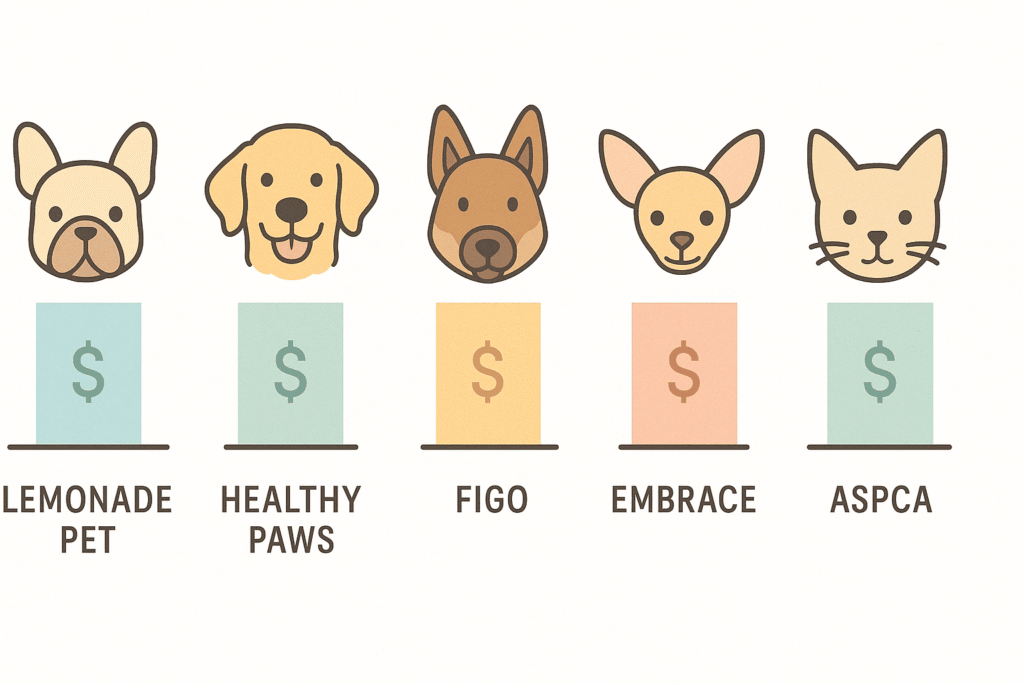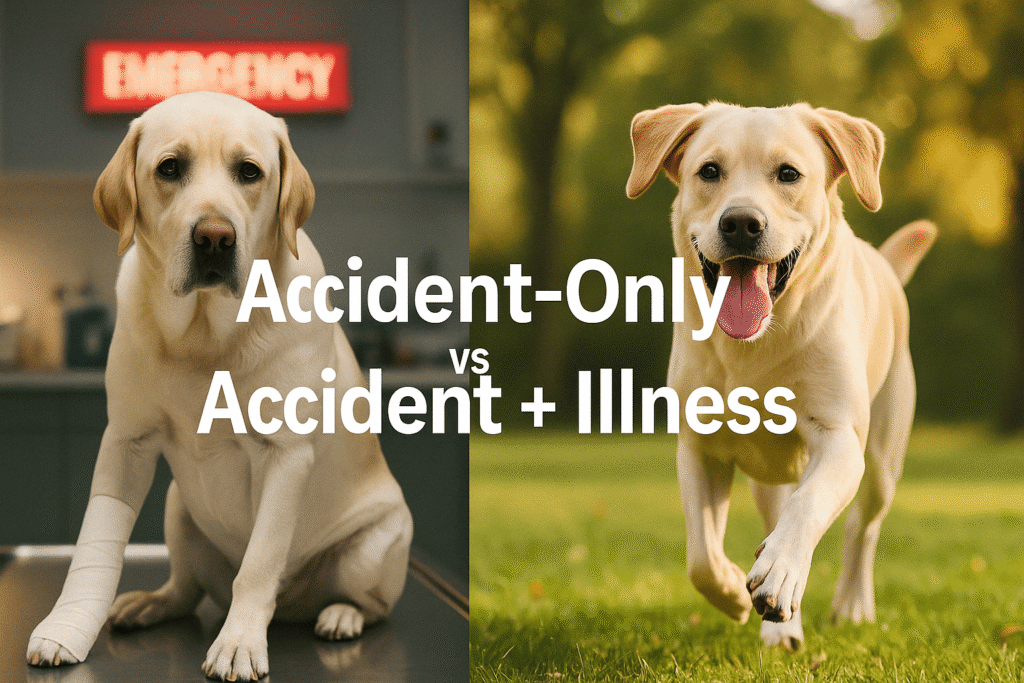Pet Insurance Quotes 2025 – Compare Plans, Cut Vet Bills & Buy Peace of Mind
Pet parents spent a record $38 billion on veterinary services in 2024, and prices keep climbing. A torn cruciate ligament in a large dog can top $4,500, while a straightforward urinary blockage in a cat hovers around $3,000.
This guide shows you how to compare pet‑insurance plans, decode the fine print, and lock in the right policy for your dog or cat—while naturally using the high‑value keywords advertisers crave.
What Exactly Is Pet Insurance—and How Does It Work?
Pet insurance reimburses a portion of your vet bill after you meet a deductible. You pay the clinic up front, file a digital claim (often from your phone), and receive 70 – 100 % of eligible costs back—usually within a week.
Key Coverage Types
| Coverage Type | What It Pays For | Typical Monthly Cost | Best For |
|---|---|---|---|
| Accident‑Only | Injuries, poisoning, foreign‑body removal | $17 (cats) / $24 (dogs) | Budget shoppers & indoor cats |
| Accident + Illness | Accidents plus cancer, allergies, hereditary issues | $32 (cats) / $56 (dogs) | Most pet owners |
| Wellness Add‑On | Vaccines, check‑ups, dental cleanings | +$10–$20 extra | Predictable routine care |
Average premiums: NAPHIA & Forbes Advisor, April 2025.
How to Compare Pet‑Insurance Quotes Like a Pro
- Deductible Type – Annual deductibles are easier to satisfy than per‑condition ones.
- Reimbursement Rate – Choose 70 %, 80 %, or 90 %. Eighty percent is the sweet spot for balancing premium and payout.
- Waiting Periods – Cruciate‑ligament injuries can have six‑month waits; check the policy.
- Bilateral Clauses – Some insurers count issues affecting both sides (e.g., both knees) as one claim.
- Direct‑Pay Options – Carriers like Lemonade or Trupanion can pay vets up front so you don’t front cash.
2025 Average Premiums by Breed, Age & State
For the first time in three years, median premiums fell thanks to new competitors. As of April 2025 the national median is $43 / month for dogs and $23 / month for cats.
| Breed / Age | Dallas, TX | New York, NY |
|---|---|---|
| French Bulldog, 2 yrs | $92 | $108 |
| Golden Retriever, 5 yrs | $64 | $77 |
| German Shepherd, 3 yrs | $68 | $80 |
| Mixed‑Breed Cat, 4 yrs | $18 | $24 |
| Chihuahua, 6 yrs | $32 | $39 |
Money‑saving tip: Enrolling before your pet’s first birthday saves up to 40 % over a lifetime of premiums.
Best Pet‑Insurance Companies 2025 (Quick Glance)

- Lemonade Pet – AI‑driven claim approvals in seconds; bundles with home & renters.
- Healthy Paws – Unlimited annual benefits; strong BBB rating.
- Figo – 24/7 live‑chat vet support included.
- Embrace – “Diminishing Deductible” knocks $50 off every claim‑free year.
- ASPCA – Multi‑pet discount up to 10 %; accident‑only pricing from $15.
Hidden Costs & Traps to Avoid
- Exam Fees – Many plans exclude the $50–$90 consult unless you add a rider.
- Prescription Food & Supplements – Covered by only one in five insurers.
- Cosmetic or Elective Procedures – Always excluded.
- Bilateral Exclusions – Already mentioned, but they still surprise many owners.
Dog Insurance Cost vs. Cat Health Insurance
Dogs visit the vet 1.7 × as often as cats and rack up more cruciate‑ligament tears, so premiums skew higher. Yet indoor cats can still generate four‑figure bills in a single ER trip, making insurance an even clearer value given their lower monthly cost.
Deductibles Demystified
- Flat Annual Deductible ($100–$1,000) – Pay it once per policy year.
- Percentage Deductible (rare) – Pay a set percent of each bill.
- Diminishing Deductible – Embrace reduces yours by $50 every claim‑free year.
Raising a deductible from $250 to $500 typically cuts premiums 18 – 22 % with only modest extra risk.
Real‑World Claim Stories

- Case 1 – Cruciate Tear: A 4‑year‑old Labrador in California had TPLO surgery costing $5,200. After a $500 deductible and 80 % reimbursement, the owner paid $1,540—saving $3,660.
- Case 2 – Feline Urethral Blockage: An indoor cat in Ohio faced a $2,900 emergency bill. A 90 % accident‑and‑illness policy left the owner owing $590.
Frequently Asked Questions
Does pet insurance cover pre‑existing conditions?
No—though issues that resolve and stay symptom‑free 12–24 months may qualify later.
Is pet insurance worth it for indoor cats?
Yes. Dental disease, kidney failure, or toxin ingestion can each cost $2,500+ in one episode.
How fast do insurers pay?
Top carriers reimburse within 3–5 business days via direct deposit; some offer instant debit‑card payouts.
Can I visit any vet?
Most U.S. policies are reimbursement‑based, so you can use any licensed veterinarian.
Do premiums rise after I file a claim?
Many insurers raise rates primarily with age and regional costs, not individual claim history—but shop at renewal to keep them honest.
Bottom Line
Getting a pet insurance quote now takes under 60 seconds online. With premiums starting lower than two cups of coffee a week, the right plan can shield you from life‑altering vet bills while letting you focus on fetches, purrs, and couch cuddles.
Ready to compare? Run three quick quotes side‑by‑side and see how little peace of mind can cost in 2025.

